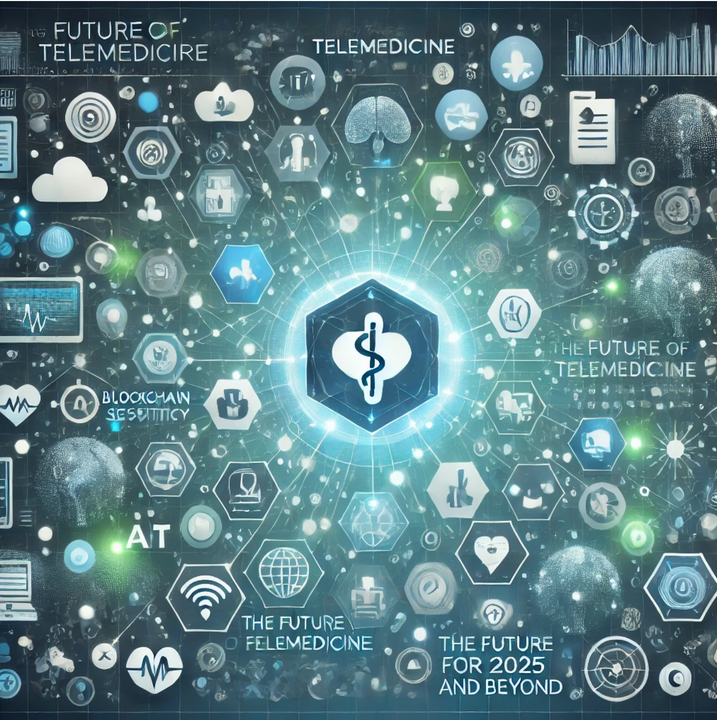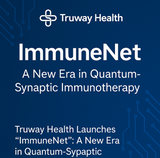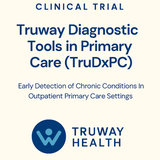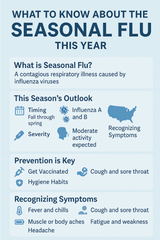The Future of Telemedicine: Trends for 2025 and Beyond
Telemedicine has grown exponentially in recent years, revolutionizing healthcare delivery and accessibility. With technological advancements and evolving patient needs, the future of telemedicine is set to reshape the healthcare landscape even further. Here’s a look at the trends expected to define telemedicine in 2025 and beyond.
1. Integration of AI for Diagnosis and Treatment
Artificial intelligence (AI) is becoming a game-changer in healthcare, and telemedicine is no exception.
What to Expect:
- AI-Powered Symptom Checkers: Patients can input symptoms into advanced AI tools for preliminary diagnoses.
- Personalized Treatment Plans: AI algorithms analyze patient data to create tailored treatment recommendations.
- Predictive Analytics: AI identifies at-risk patients and intervenes early to prevent complications.
Example in Action:
Virtual consultations supported by AI can guide doctors with real-time insights, reducing diagnostic errors and improving outcomes.
2. Expanded Remote Monitoring with IoT Devices
Internet of Things (IoT) technology is enabling remote health monitoring like never before.
What to Expect:
- Wearable Devices: Advanced wearables track vitals such as heart rate, blood pressure, and oxygen levels, sending real-time data to healthcare providers.
- Smart Implants: Devices like glucose monitors and pacemakers communicate directly with telemedicine platforms.
- Home-Based Health Hubs: Integrated systems monitor multiple health metrics simultaneously.
Example in Action:
Patients with chronic conditions like diabetes or heart disease can be monitored continuously, reducing hospital visits and enabling proactive care.
3. 5G Networks Enabling Seamless Virtual Care
High-speed 5G networks will drastically improve the telemedicine experience by enabling faster, more reliable connections.
What to Expect:
- High-Quality Video Consultations: Improved video quality ensures clearer communication between doctors and patients.
- Real-Time Data Transfer: Large data files, such as MRI scans, can be shared instantly.
- Rural Accessibility: 5G expands telemedicine to underserved areas with limited connectivity.
Example in Action:
A patient in a remote area can receive a live ultrasound guided by a specialist located miles away.
4. Blockchain for Data Security and Privacy
As telemedicine grows, ensuring the security and privacy of patient data will remain a top priority. Blockchain technology is emerging as a solution.
What to Expect:
- Decentralized Records: Patients can control access to their health data through secure blockchain systems.
- Fraud Prevention: Blockchain reduces the risk of tampered records or billing fraud.
- Smart Contracts: Automated billing and insurance claims processing via blockchain.
Example in Action:
Patients’ medical histories are stored securely on the blockchain, accessible only by authorized healthcare providers.
5. Virtual Reality (VR) and Augmented Reality (AR) in Telemedicine
VR and AR are transforming how telemedicine providers interact with patients.
What to Expect:
- VR Therapy: Patients with anxiety or PTSD can access guided VR therapy sessions from home.
- AR for Remote Procedures: AR technology assists healthcare providers during remote surgeries or diagnostics.
- Virtual Training for Physicians: Doctors can practice complex procedures in a virtual environment.
Example in Action:
A surgeon uses AR glasses to guide a remote team during a complex operation, ensuring precision and efficiency.
6. Comprehensive Telemedicine Platforms
Future telemedicine platforms will offer a one-stop solution for all healthcare needs.
What to Expect:
- End-to-End Patient Journeys: From booking appointments to receiving prescriptions, every step will be integrated.
- Multilingual Support: AI-driven language tools will make telemedicine accessible globally.
- Interoperability: Seamless data sharing between telemedicine platforms and electronic health record (EHR) systems.
Example in Action:
Patients log into a single platform to consult with doctors, access lab results, and manage medications.
7. Focus on Mental Health Telemedicine
Mental health care via telemedicine is becoming increasingly vital.
What to Expect:
- On-Demand Therapy: Instant access to licensed therapists via video or chat.
- AI Chatbots for Mental Health: AI tools provide support for stress, anxiety, or depression.
- Group Therapy Sessions: Virtual group therapy sessions promote connection and healing.
Example in Action:
A patient struggling with anxiety receives support via an AI chatbot, with follow-up care from a licensed therapist.
8. Personalized Medicine with Genomics
Telemedicine will integrate genomic data to provide precision medicine tailored to each individual.
What to Expect:
- Genomic Consultations: Virtual consultations based on patients’ genetic profiles.
- Targeted Treatments: Telemedicine providers can recommend treatments based on DNA analysis.
- Preventative Care: Genetic data identifies risks for future illnesses, enabling early intervention.
Example in Action:
A patient learns about their predisposition to certain conditions through a telemedicine consultation and receives preventive care recommendations.
9. Increased Adoption of Hybrid Models
Hybrid care combines telemedicine with traditional in-person visits for a balanced approach.
What to Expect:
- Virtual Follow-Ups: Routine check-ups and medication adjustments done remotely.
- In-Person Diagnostics: For tests or procedures requiring physical presence.
- Seamless Transitions: Patients can switch between virtual and in-person care without disruption.
Example in Action:
A patient consults their doctor virtually, then visits a local lab for blood work, with results integrated into the same telemedicine platform.
10. Government and Insurance Support
Governments and insurers will increasingly support telemedicine as a cost-effective and scalable healthcare solution.
What to Expect:
- Expanded Coverage: Telemedicine services will be covered more comprehensively by insurance.
- Subsidized Equipment: Governments may provide subsidies for devices like wearable monitors.
- Global Telemedicine Networks: Cross-border collaborations to address healthcare gaps.
Example in Action:
Patients use subsidized devices for remote monitoring, with their insurance covering virtual consultations.
Conclusion
The future of telemedicine is brighter than ever, with trends like AI, IoT, blockchain, and VR driving innovation. These advancements will make healthcare more accessible, personalized, and efficient, ensuring better outcomes for patients worldwide. As we move toward 2025 and beyond, telemedicine will continue to break barriers, bringing the promise of quality healthcare to every corner of the globe.
Explore how Truway Health is embracing telemedicine to transform healthcare delivery. Contact us today to learn more.
Truway Health News & Insights
Breathe, Refuel, Recharge: Finding Your Daily Balance
Written by Perry JohanssenPublished and Edited by Truway Health Life rarely slows down on its own. B...
Truway Health Launches “ImmuneNet”: A New Era in Quantum-Synaptic Immunotherapy
Reimagining How Immunity Can Be Understood and Guided At Truway Health, innovation never sleeps.Toda...
Announcing the HEALTH Trial: Humanoid Evaluation and Learning in Healthcare
Published by Truway Health, Inc.Principal Investigator: Gavin SolomonClinicalTrials.gov Identifier:...
We’re thrilled to launch our first-ever clinical trial of TruDxPc
Study Identification Protocol ID: TRHW-DX-001 Brief Title: Truway Diagnostic Tools in Primary Ca...
What to Know About the Seasonal Flu This Year
As cooler weather sets in, flu season returns. Each year brings new strains, evolving guidance, and...
Gamification and Health: Turning Wellness Into a Daily Game
Introduction For many people, staying healthy feels like a chore: eating clean, exercising regularly...







